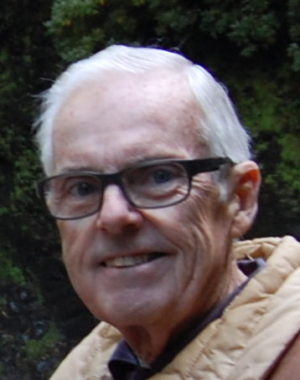
To view the Journal for MARCH click on this link GOTO MARCH Journals…or click on the “header at the top of this page, select “Journals” for the drop-down menu. If pictures appear missing, use your “refresh” button.
HAPPINESS is to have EVERYTHING
you NEED,
NOT the NEED to have EVERYTHING
This month’s Travel Plans:
14. March 4th Cottonwood, AZ at Verde Valley RVP (TT) x 14 nights (A section!!)
15. March 18th Grand Canyon Village at GC Campground for 4 nights
16. March 22nd Las Vegas at Las Vegas TT Campground for 14 nights
*****************************************
3.14.2019-Thursday-we visit Montezuma Castle and Montezuma Well
The italicized text is courtesy of the National Park Service (NPS)

The nice part of these two venues is their location, within a 30 minute ride from this campground. Both venues were very interesting but not as interesting as I had hoped for.
We must check in and present our Park Pass with accompanying ID, nice part, no money is exchanged.
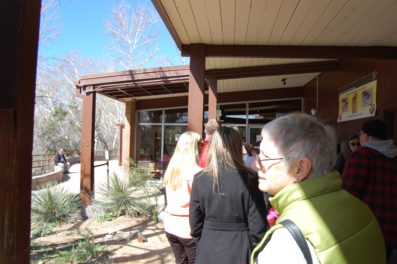
On December 8, 1906, President Theodore Roosevelt celebrated the passage of the Antiquities Act by declaring four sites of historic and cultural significance as our nation’s first National Monuments. Among these was Montezuma Castle, which the President identified as a place “of the greatest ethnological value and scientific interest.”
This is like taking a stroll in the park. The cement path is about six-feet wide.
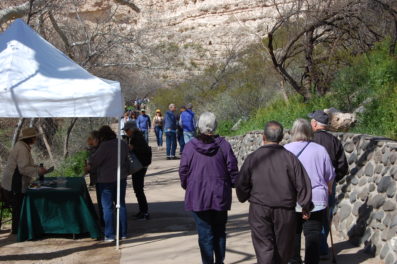
Although very few original artifacts remained in the structure due to intensive looting of the site, Roosevelt’s decision assured the continued protection of one of the best preserved prehistoric cliff dwellings in North America.
Below..A Sycamore Tree. The ancestors use them extensively in the construction of their cliff homes and ladders.
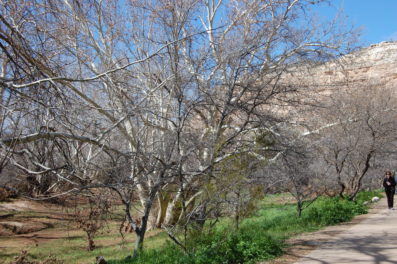
Montezuma Castle National Monument quickly became a destination for America’s first car-bound tourists. In 1933, “Castle A”, a 45-50 room, pueblo ruin was excavated, uncovering a wealth of artifacts and greatly enhanced our understanding of the Sinagua people who inhabited this riparian “oasis” along Beaver Creek for over 400 years.
This is the same river, the Verde River, that runs in back of our campground. This section of the river is called Beaver Creek.
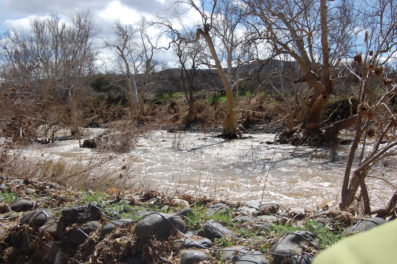
Early visitors to the monument were allowed access to the structure by climbing a series of ladders up the side of the limestone cliffs. However, due to extensive damage to this valuable cultural landmark, public access of the ruins was discontinued in 1951.
This is what we came here to see. the wall is a four-level living quarters that housed dozens of people. In the next picture you’ll see a schematic. In the pictures that will follow arena additional living spaces used by these peoples. 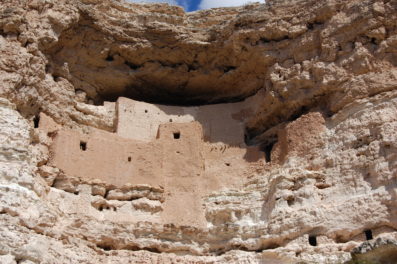
Now, approximately 350,000 people a year gaze through the windows of the past during a visit to Montezuma Castle. Even 600 years after their departure, the legacy of the Sinagua people continues to inspire the imaginations of this and future generations.
If you could remove the front wall this is what you would see.
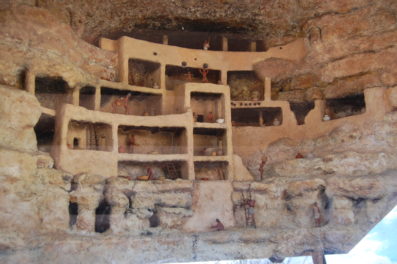
Your neighbors would live in these cut-outs. The stone here is mostly limestone which is very soft but the dark/black rock you also see is Manganese a very hard rock.
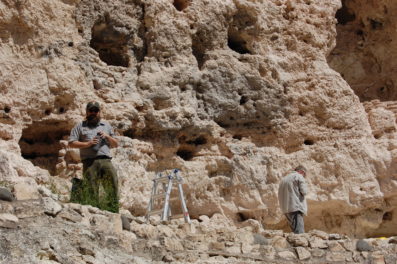
“Everything we were, we carry with us. Everything we will be, is calling to us, from the roads not traveled yet." pjgrenier